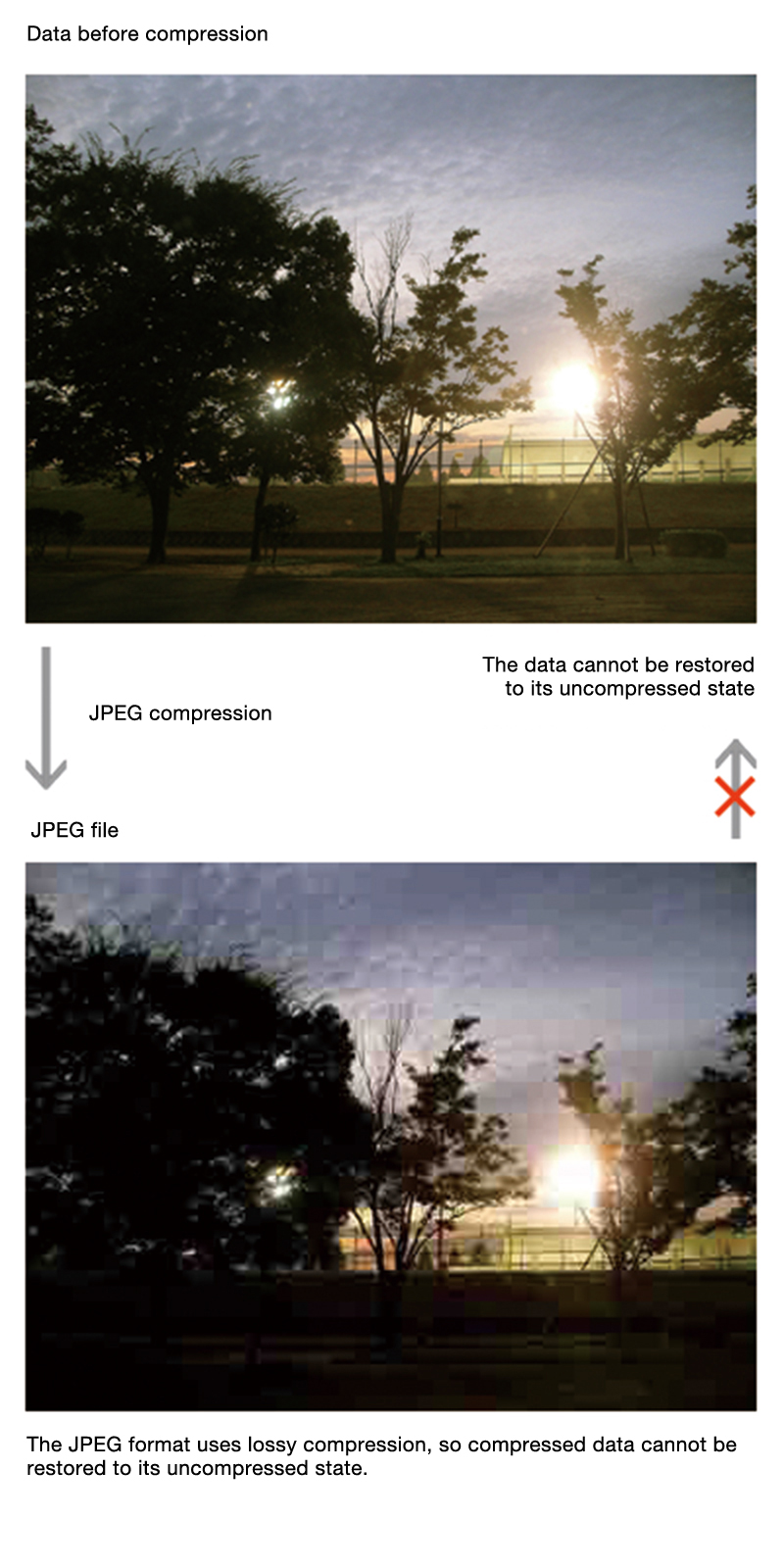Lossy Compression
非可逆圧縮
Hikagyakuasshuku
CATEGORIES
If data is deleted to reduce the size during compression, that data cannot be restored. This type of compression method in which the original data cannot be restored from the compressed data is referred to as lossy compression. Because image, audio and video data is relatively large in size, a high compression ratio is required when using networks, etc. As long as the changes are not very noticeable, it is possible to delete some of the data.
JPEG image data (Note 1), MP3 audio data and MPEG video data all make use of this lossy compression method. JPEG and MPEG formats reduce the data size by discarding data that is hardly noticeable to the human eye and by eliminating waste where there is little difference in adjoining sections and when there are similar portions in the background or in each frame. The MP3 format compresses data in a similar way by eliminating data that is hard to discern to the human ear and combining other compression techniques. The higher the compression ratio, the smaller the size of the data will be. However, this is accompanied by degradation in quality.
In either case, because this method does not allow for the original data to be restored after compression, it is best to edit the files in their uncompressed or lossless compression formats first, and to compress them only once after editing, according to their use. It would also be advisable to keep a copy of the uncompressed data. Lossless compression is used with text and program data because it would become useless unless the original data can be restored from the compressed file.
Note 1: There is also a lossless JPEG format but it is seldom used in practice.
*Because the image shown here is a JPEG file, strictly speaking, this is not a comparison of data in uncompressed and compressed states. To make the difference clearer, the image below has been degraded at a high compression ratio.

